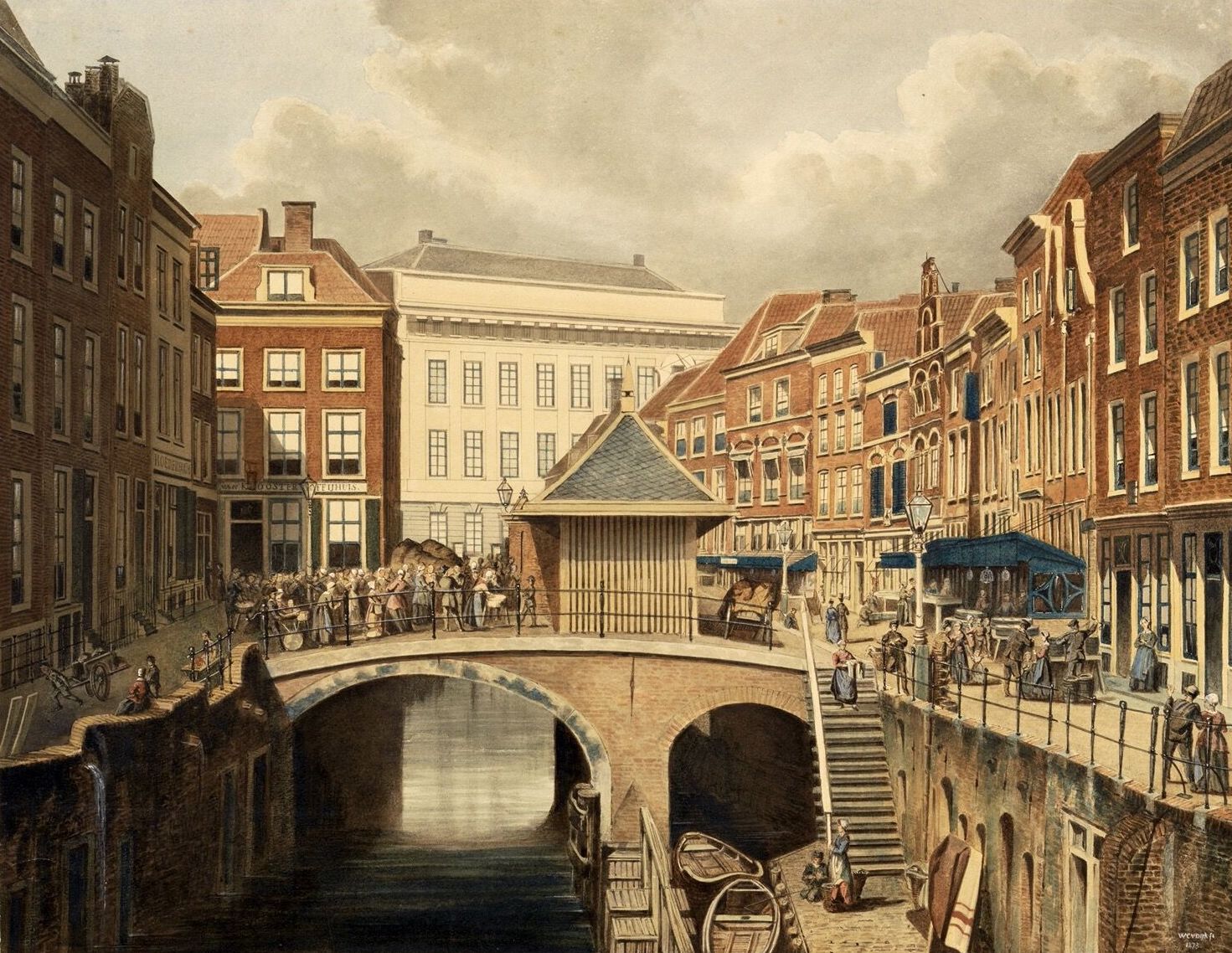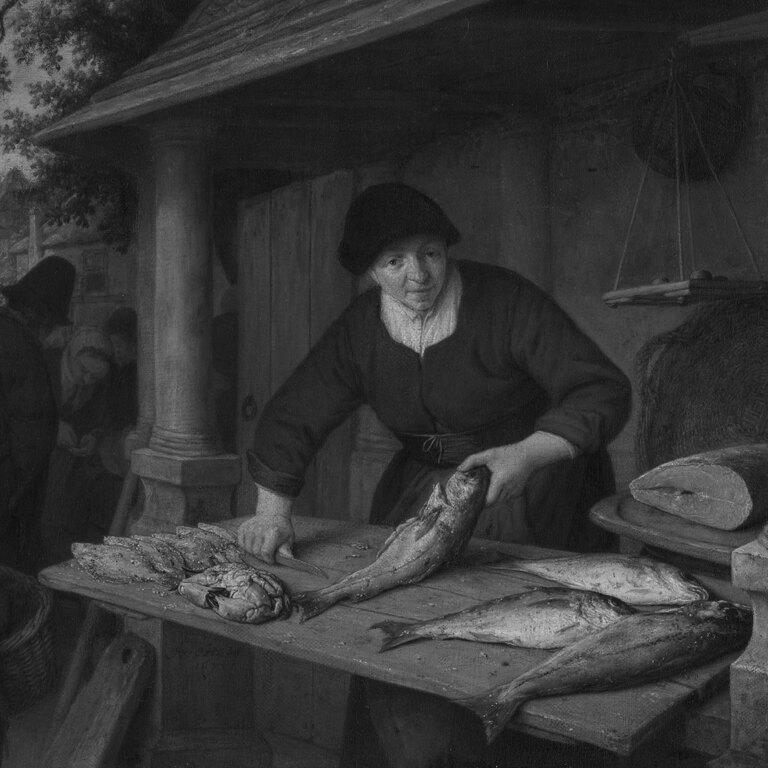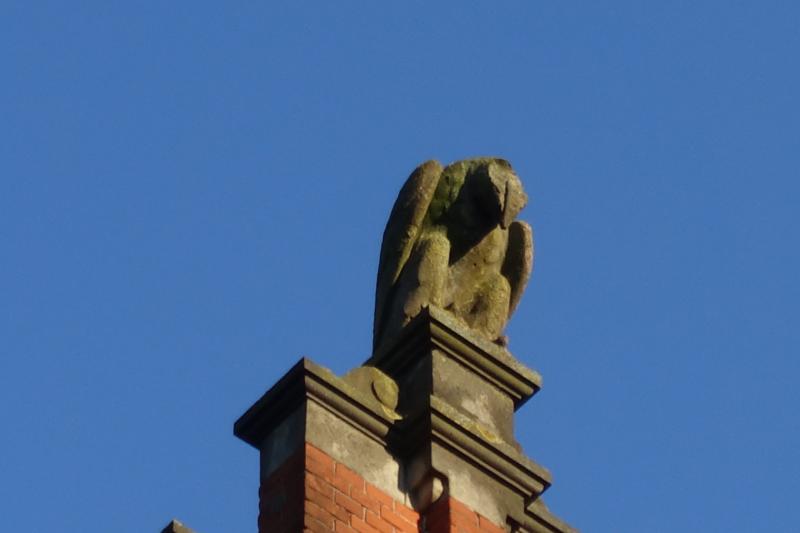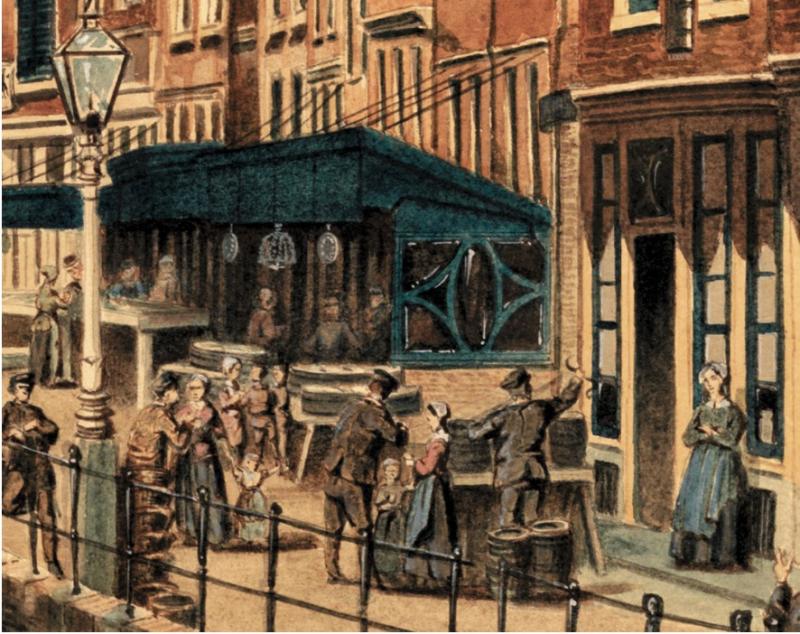Vismarkt
De Vismarkt met de Kalisbrug
Vismarkt
De Vismarkt met de Kalisbrug
Dit gezicht vanaf de Maartensbrug over de Oudegracht is in anderhalve eeuw weinig veranderd. Het beeld wordt beheerst door de brug waar vis wordt verhandeld. Dat is de Kalisbrug, een in oorsprong middeleeuwse brug die werd verbreed om er markt te kunnen houden. In het midden staat het visafslaghuisje, de voorganger van het huidige, meer naar links geplaatste gebouwtje waar tegenwoordig op zaterdag de postzegelmarkt onderdak vindt. Rechts van de brug leidt een trap naar de werf waar twee boten liggen en in het water hangen enkele viskaren: houten bakken waarin levende vis werd bewaard.
Rechts op de tekening zijn de gevels te zien van de huizen aan de Vismarkt, de straat die zijn naam ontleent aan de markt die hier eeuwenlang plaats vond. In veel van deze huizen was vroeger een viswinkel gevestigd. In 1873, het jaar van de voorstelling van dit tegeltableau, waren enkele viswinkels nog volop in bedrijf. Onder de luifels zijn toonbanken geplaatst waarop de vis ligt uitgestald. Sommige huizen hebben hier nog een oude trapgevel of een klokgevel, maar de meeste puien zijn in de negentiende eeuw vereenvoudigd en hebben een lijstgevel gekregen.
De huizen links liggen aan de Zoutmarkt. Zout was een onmisbaar product voor de vishandel en daarom bevond de zoutmarkt zich in de nabijheid van de vismarkt. Deze huizen hadden in 1873 nog hun hoofdingang aan de Zoutmarkt maar de meeste zijn gaandeweg achterhuizen van de huizen aan de Choorstraat geworden. De straat is hier begrensd door een gemetseld muurtje van wisselende hoogte, in wezen een verhoging van de werfmuur. Dit was een ouderwetse constructie die veel onderhoud vroeg en daarom vanaf de achttiende eeuw op steeds meer plaatsen werd vervangen door gietijzeren balies zoals die op de Kalisbrug en langs de Vismarkt zijn te zien. Op een lager deel van de werfmuur is een bank geplaatst met een gietijzeren balie als rugleuning. De werfkelders van de huizen aan de Zoutmarkt hebben geen werf.
Het grote huis linksachter de brug staat op de hoek van het Hanengeschrei, het korte straatje tussen de Choorstraat en de Kalisbrug. In 1873 was er kennelijk een koffiehuis in gevestigd. Op de achtergrond wordt dit stadsbeeld afgesloten door de lichte zandstenen gevel van het stadhuis. Het gedeelte met de linker vier vensters dateert van de grote verbouwing van 1824–1830 waarbij het stadhuis ook zijn klassieke voorgevel kreeg. Het rechterdeel is er later in de negentiende eeuw in dezelfde stijl aangebouwd.
Zoals veel kunstschilders uit zijn tijd experimenteerde Willem Cornelis van Dijk met het nieuwe medium fotografie. Van hem is een foto bewaard gebleven die exact hetzelfde beeld weergeeft. Waarschijnlijk heeft hij deze foto in zijn atelier gebruikt als geheugensteun voor deze zeer gedetailleerde tekening.







